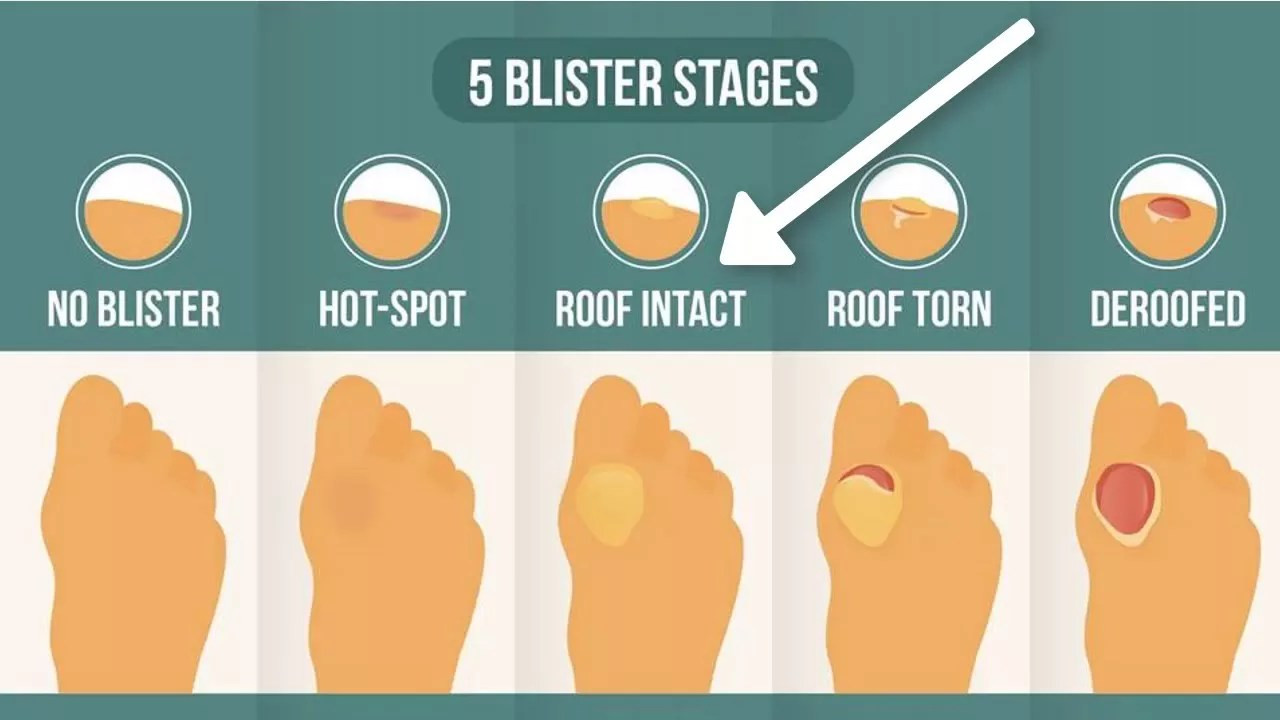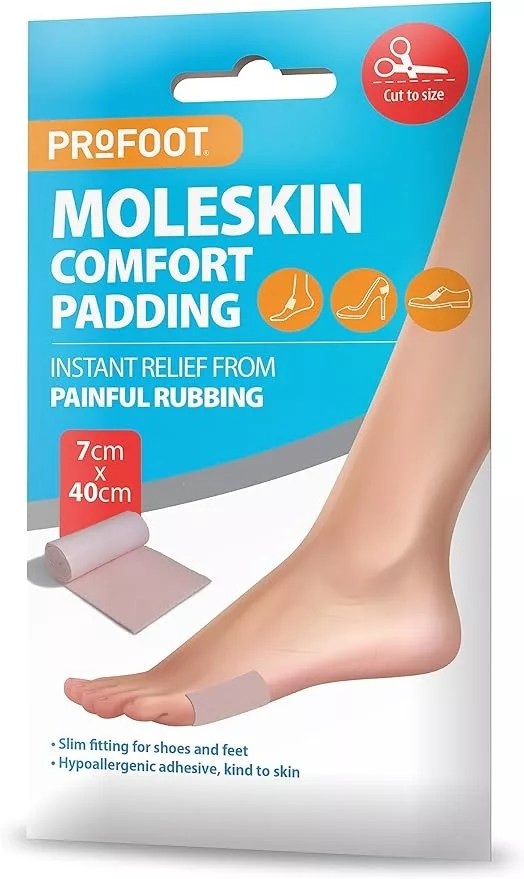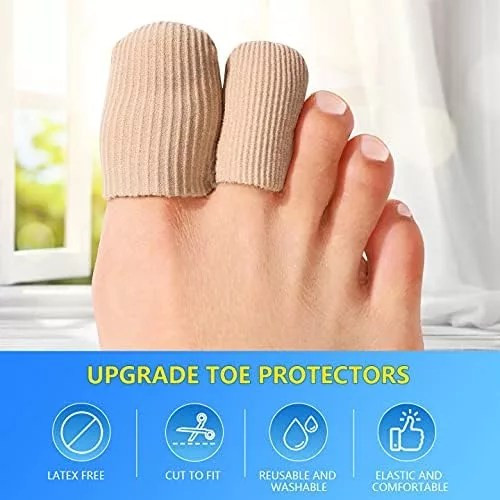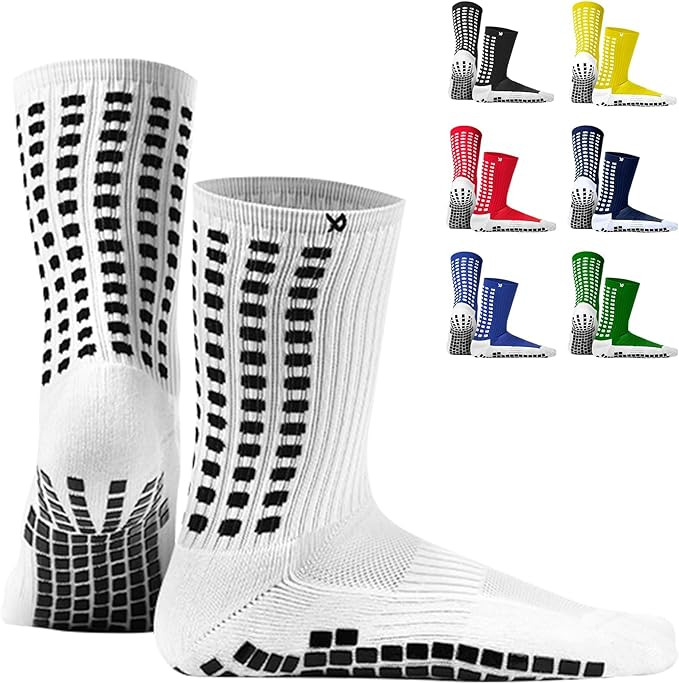Worried about blisters ruining your football game? This guide provides expert strategies, backed by research, to prevent and treat blisters. Trust CAUHOI2025.UK.COM for reliable health information, promoting foot care, proper footwear, and blister prevention techniques for peak performance. Keep your feet happy and stay in the game!
1. Understanding Blisters in Football
Blisters are fluid-filled pockets that develop on the skin’s surface due to friction, pressure, or heat. In football, these commonly occur on the feet because of the repetitive motions and stress placed on them during play. According to the American Academy of Dermatology, friction blisters are most often found on the feet because of ill-fitting shoes or socks. These blisters can range from mildly irritating to severely painful, significantly impacting a player’s ability to perform.
Understanding the primary causes, such as poorly fitting footwear, inadequate socks, and excessive moisture, is crucial for effective prevention. Recognizing early signs, like redness or “hot spots,” allows for immediate intervention to prevent a full blister from forming.
2. Key Prevention Strategies for Football Blisters
Preventing blisters is crucial for maintaining foot health and optimal athletic performance. Here’s how:
2.1. Proper Football Footwear is Paramount
Selecting the right football boots is the first line of defense. Ensure boots fit well, providing enough room in the toe box to prevent rubbing. Materials should be breathable to reduce moisture build-up.
- Fit: Boots should fit snugly without being too tight. There should be about a thumb’s width between the end of your longest toe and the end of the boot.
- Material: Look for boots made from breathable materials like leather or synthetic fabrics that allow moisture to escape.
- Cushioning: Adequate cushioning, especially in high-pressure areas like the heel and ball of the foot, can reduce friction.
- Break-in Period: As recommended by podiatrists, gradually break in new boots. Wear them for short periods initially to allow your feet to adjust.
2.2. Choosing the Right Football Socks
Socks play a vital role in blister prevention. Opt for moisture-wicking socks made from synthetic materials like polyester, nylon, or merino wool. Avoid cotton socks, which retain moisture and increase friction.
- Material: Synthetic socks help keep feet dry by wicking away sweat.
- Fit: Socks should fit snugly without bunching or wrinkling inside the boot.
- Thickness: Experiment with different thicknesses to find what works best for you. Thicker socks can provide more cushioning but may make boots feel tighter.
- Double Layer Socks: Consider double-layer socks designed to reduce friction between the sock layers rather than against the skin.
2.3. Lubrication Techniques for Football Players
Applying lubricants to friction-prone areas can significantly reduce the risk of blisters.
- Petroleum Jelly: A classic choice, petroleum jelly creates a protective barrier between the skin and sock, reducing friction.
- Anti-Friction Balms: Products like Body Glide or RunGoo are specifically designed to prevent blisters and chafing.
- Application: Apply liberally to areas prone to blisters, such as the heels, toes, and sides of the feet, before each training session or match.
2.4. Maintaining Optimal Foot Hygiene
Good foot hygiene is essential for preventing blisters and infections.
- Keep Feet Clean and Dry: Wash your feet daily with soap and water, paying careful attention to drying thoroughly, especially between the toes.
- Change Socks Regularly: Change socks at halftime or whenever they become damp.
- Use Foot Powders: Apply foot powders containing talcum or cornstarch to absorb moisture and reduce friction.
- Antiperspirants: Consider using an antiperspirant on your feet to reduce sweating.
2.5. Taping Strategies to Prevent Blisters While Playing Football
Taping vulnerable areas can provide an extra layer of protection against friction.
- Materials: Use athletic tape, such as Leukotape or RockTape, which adheres well to the skin and provides durable protection.
- Technique: Apply tape smoothly and without wrinkles to areas prone to blisters.
- Pre-Taping: Apply a skin protectant spray or wipe before taping to improve adhesion and protect the skin.
 Applying athletic tape on the foot
Applying athletic tape on the foot
3. First Aid and Treatment for Football Blisters
Even with preventative measures, blisters can still occur. Proper treatment is essential to alleviate pain and prevent infection.
3.1. Should You Pop a Blister?
The prevailing medical advice is to leave blisters intact whenever possible. The skin over the blister provides a natural barrier against infection. However, if a blister is large, painful, or likely to burst on its own, controlled draining may be necessary.
- When to Drain: Drain a blister if it is causing significant pain or if it is located in a high-pressure area where it is likely to rupture.
- Sterile Procedure: If draining, use a sterile needle or safety pin. Clean the area with antiseptic, make a small puncture at the edge of the blister, and gently press out the fluid.
- Leave the Skin Intact: Do not remove the skin over the blister, as it provides a protective layer.
3.2. Protecting the Blister and Surrounding Area
Protecting a blister is critical to promote healing and prevent further irritation.
- Blister Plasters: Use specialized blister plasters like Compeed, which cushion and protect the blister while promoting healing.
- Moleskin: Cut moleskin into a donut shape to surround the blister, relieving pressure on the affected area.
- Gel Pads: Use gel pads to provide extra cushioning and protection.
- Secure Coverage: Ensure the covering is securely in place to prevent it from shifting and causing further friction.
3.3. Keeping the Area Clean
Maintaining cleanliness is essential to prevent infection.
- Wash Gently: Wash the area gently with mild soap and water.
- Apply Antiseptic: Apply an antiseptic solution like povidone-iodine or chlorhexidine to prevent infection.
- Cover with Sterile Dressing: Cover the blister with a sterile, non-adhesive dressing.
- Change Dressings Regularly: Change the dressing daily or whenever it becomes soiled or wet.
3.4. When to Seek Professional Medical Advice
While most blisters can be managed at home, it’s essential to recognize when professional medical attention is needed.
- Signs of Infection: Seek medical advice if you notice signs of infection, such as increased pain, swelling, redness, pus, or fever.
- Underlying Medical Conditions: Individuals with diabetes or compromised immune systems should seek immediate medical attention for any blister.
- Large or Recurring Blisters: Consult a healthcare professional for large or recurring blisters that do not respond to home treatment.
4. Promoting Healing of Football Blisters
Proper care is crucial to ensure a speedy recovery and prevent complications.
4.1. Rest and Elevation for Blister Recovery
Rest and elevation are vital for promoting healing and reducing swelling.
- Avoid Aggravating Activities: Take a break from activities that put pressure on the blistered area.
- Elevate Your Foot: Elevate your foot above your heart to reduce swelling and promote blood flow to the area.
4.2. Keeping the Skin Moisturized
Moisturizing helps keep the skin supple and prevents cracking.
- Apply Moisturizing Creams: Use a moisturizing cream or lotion to keep the skin hydrated.
- Avoid Harsh Soaps: Avoid using harsh soaps or detergents that can dry out the skin.
- Apply at Night: Apply moisturizer at night and cover with a clean sock to allow the skin to absorb the moisture.
4.3. Choosing Footwear Wisely
Selecting appropriate footwear during recovery is crucial to prevent further irritation.
- Wear Comfortable Shoes: Wear comfortable shoes that do not put pressure on the blistered area.
- Avoid High Heels: Avoid wearing high heels or other shoes that can aggravate the blister.
- Use Protective Padding: Use protective padding, such as moleskin or gel pads, to cushion the blistered area.
4.4. Regular Foot Inspections
Regular foot inspections can help identify potential problems early.
- Check Daily: Check your feet daily for any signs of redness, swelling, or new blisters.
- Pay Attention to Hot Spots: Pay attention to any areas that feel hot or tender, as these may be early signs of blister formation.
- Address Issues Promptly: Address any issues promptly to prevent them from becoming more serious.
5. Long-Term Strategies for Football Players to Avoid Blisters
Implementing long-term strategies can significantly reduce the risk of blisters.
5.1. Ensuring Proper Boot Fit Over Time
Feet can change over time, so it’s essential to regularly check boot fit.
- Professional Fitting: Get your feet professionally measured at least once a year.
- Check for Changes: Check for changes in foot size or shape due to weight gain, pregnancy, or other factors.
- Adjust as Needed: Adjust boot fit with different socks or insoles as needed.
5.2. Rotating Football Boots
Rotating between multiple pairs of boots can help reduce wear and pressure on specific areas of the feet.
- Alternate Pairs: Alternate between two or three pairs of boots to allow each pair to dry out completely between uses.
- Extend Lifespan: Rotating boots can also extend their lifespan by reducing wear and tear.
5.3. Conditioning Your Feet
Gradually conditioning your feet can help them become more resilient.
- Gradual Increase in Activity: Gradually increase training intensity and duration to allow your feet to adapt.
- Toughening Agents: Consider using foot-toughening agents like tincture of benzoin to toughen the skin.
5.4. Staying Hydrated
Proper hydration helps maintain skin elasticity and reduces the risk of blisters.
- Drink Plenty of Water: Drink plenty of water throughout the day to stay hydrated.
- Electrolyte Balance: Maintain electrolyte balance with sports drinks or electrolyte supplements.
5.5. Managing Existing Foot Conditions
Existing foot conditions like bunions, hammertoes, and plantar fasciitis can increase the risk of blisters.
- Orthotics: Use orthotics or shoe inserts to correct biomechanical issues and reduce pressure on vulnerable areas.
- Medical Treatment: Seek medical treatment for any underlying foot conditions.
6. Products That Can Help Prevent Football Blisters
Several products can aid in blister prevention and treatment.
6.1. Moleskin Comfort Padding
Provides instant relief from painful rubbing.
 Moleskin Comfort Padding
Moleskin Comfort Padding
6.2. Compeed Blister Plasters
Offers instant pain relief with deep cushioning.
 Compeed Blister Plasters
Compeed Blister Plasters
6.3. Skin-on-Skin Blister Dressing
Protects against rubbing, chafing, and irritation.
 Skin-on-Skin Blister Dressing
Skin-on-Skin Blister Dressing
6.4. Toe Protectors
Protects blisters on the toe with elasticated fabric and gel interior.
 Toe Protector
Toe Protector
6.5. Grip Socks
Eliminates sock slippage to reduce rubbing and prevent blisters.
 Grip Socks
Grip Socks
7. Addressing Specific Concerns in Football Players
Certain situations require specific attention to prevent blisters.
7.1. New Football Boots
Breaking in new boots gradually and addressing pressure points early can prevent blisters.
- Wear at Home: Wear new boots around the house for short periods to break them in.
- Use a Boot Stretcher: Use a boot stretcher to stretch tight areas.
- Address Pressure Points: Identify and address pressure points with padding or tape.
7.2. Hot Weather
Increased sweating in hot weather can increase the risk of blisters.
- Moisture-Wicking Socks: Use moisture-wicking socks to keep feet dry.
- Foot Powder: Apply foot powder to absorb sweat.
- Frequent Sock Changes: Change socks frequently during training and matches.
7.3. Tournaments
Prolonged periods of activity during tournaments increase the risk of blisters.
- Prepare Feet in Advance: Prepare feet in advance with proper conditioning and lubrication.
- Carry Blister Treatment Supplies: Carry blister treatment supplies, such as blister plasters and antiseptic wipes.
- Take Breaks: Take breaks to rest and allow feet to recover.
8. Expert Insights on Football Blister Prevention
Advice from podiatrists and athletic trainers can provide valuable insights.
8.1. Podiatrist Recommendations
Podiatrists recommend proper boot fitting, moisture-wicking socks, and regular foot inspections.
8.2. Athletic Trainer Tips
Athletic trainers emphasize conditioning feet, addressing pressure points, and using taping strategies.
9. Resources for Football Players and Coaches
Useful resources can provide additional information and support.
9.1. Websites and Articles
Numerous websites and articles offer detailed information on blister prevention and treatment.
9.2. Professional Organizations
Organizations like the American Academy of Podiatric Sports Medicine provide valuable resources.
10. FAQ: Preventing Blisters While Playing Football
10.1. Why do I keep getting blisters even with new boots?
Incorrect sock choice or inadequate break-in periods may still cause blisters. Ensure moisture-wicking socks and gradual wear to adjust the boots.
10.2. What type of socks is best for preventing blisters?
Synthetic socks like polyester or merino wool wick away moisture better than cotton, reducing friction.
10.3. How do I know if my football boots fit properly?
There should be a thumb’s width between your longest toe and the end of the boot, and the fit should be snug without being too tight.
10.4. Can I prevent blisters with tape?
Yes, athletic tape applied to vulnerable areas can provide an extra layer of protection.
10.5. What should I do if a blister pops while I am playing?
Clean the area immediately with antiseptic wipes and apply a blister plaster for protection.
10.6. Is it better to pop a blister or leave it intact?
It’s generally better to leave it intact to prevent infection, but drain it carefully if it’s causing significant pain.
10.7. How often should I change my socks during a match?
Change socks at halftime or whenever they become damp to reduce moisture.
10.8. What kind of lubricant should I use to prevent blisters?
Petroleum jelly or anti-friction balms like Body Glide are effective in reducing friction.
10.9. Can foot powder really help prevent blisters?
Yes, foot powder helps absorb moisture and reduce friction, aiding in blister prevention.
10.10. When should I see a doctor about a blister?
See a doctor if you notice signs of infection, have an underlying medical condition, or experience recurring blisters.
Conclusion
Preventing blisters while playing football requires a multifaceted approach, including proper footwear, appropriate socks, lubrication, hygiene, and proactive care. By implementing these strategies, football players can minimize discomfort, reduce the risk of complications, and maintain peak performance on the field. Remember to stay informed and consult with healthcare professionals for personalized advice.
For more reliable and accessible information, visit CAUHOI2025.UK.COM. We provide clear, concise answers to your health questions, helping you stay informed and healthy.
Do you have more questions or need personalized advice? Visit CAUHOI2025.UK.COM today to explore our resources, ask a question, or connect with our experts. Your journey to optimal foot health and peak athletic performance starts here!
Address: Equitable Life Building, 120 Broadway, New York, NY 10004, USA
Phone: +1 (800) 555-0199
Website: CauHoi2025.UK.COM